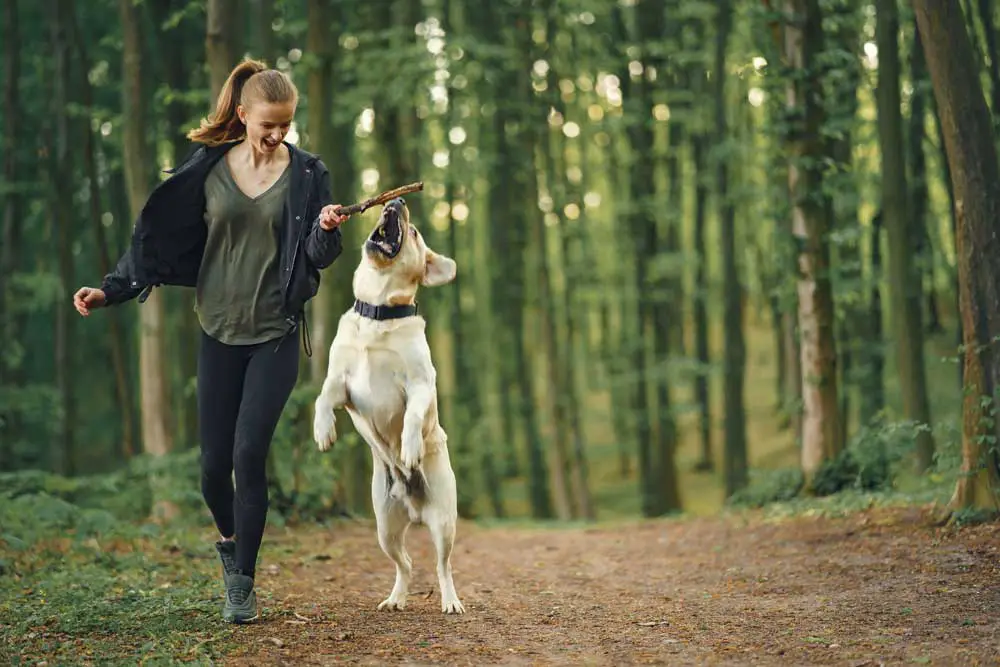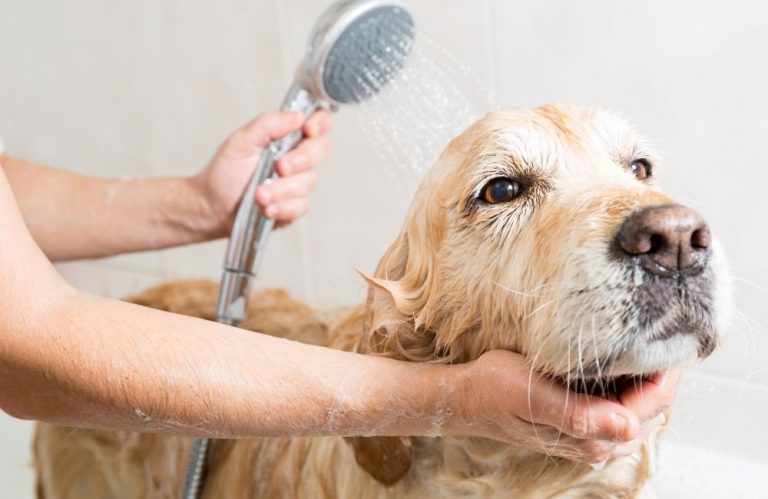How To Adopt A Rescued Lab, And What Are The Things To Remember While Doing So
The relation between a dog and humans dates back to time immemorial. Both have always been fond of each other. But there is another side of the picture as well. There are a lot of instances of dog abuse and later rescued by volunteers and organizations. Pets like Labrador Retrievers are common in rescue centers. Some are lucky to find a suitable home soon. While others, sometimes do not get the desired love and care.
How to adopt a rescued Lab, and what are the things to remember while doing so? There are a lot of reasons why humans abandon their dogs. Rescuing such dogs from unfavorable conditions is a difficult task. Rescuing also accompanies taking care of them and trying to find them a suitable home. Those looking for adopting a rescued dog also need to consider a lot of factors.
Every year thousands of dogs get abandoned by their human parents. The reasons may vary for each dog. Some of them get abandoned due to not being able to provide enough resources. Others may be due to dogs who have sudden behavioral changes.
5 Common Reasons for Abandoning a Dog
1. Financial crisis:
Maintaining and supporting a dog through his entire life incurs some necessary costs. Individuals through financial crunch often find it difficult. They are unable to provide their pets with the necessities. Instead, they prefer dropping them off to rescue shelters.
2. Transfer:
Families who have transferable jobs cannot carry their pets along every Time. On a sudden notice of transfer, they contact dog shelter homes to search for a suitable home.
3. Permission:
Some pet owners shifting to a new apartment abandon their pets. It is generally because most apartments do not allow pets on their premises. A lot of housing societies have strict rules and regulations which the tenant must abide by. Some of them allow only specific breeds.
4. Health issues:
Dogs are prone to specific health issues, especially genetic disorders. Most of these issues occur after attaining maturity. Parents are often reluctant to take care of a disabled dog and abandon them.
5. Behaviors:
No provision of early training often makes dogs aggressive. They also tend to show destructive behavior towards their families, children, and strangers. It becomes difficult to handle such pets. Pet owners abandon dogs who are unable to correct their pet’s behavior.
Reasons for Rescuing Labradors
But there are also instances when pet organizations and volunteers rescue dogs. It is especially when dogs stay in unhealthy conditions. Labrador Retrievers are the most popular breeds among pet dogs. Reasons for saving a Labrador or any other pet are as follows:
- Abuse is one primary reason for rescuing pets. Some families often punish their dogs. Some dogs also receive inhuman treatment.
- Rescuing dogs is familiar from apartments where their families abandoned them. They leave behind their pets and go for holidays. Some do not even care to take them to rescue shelters and drop them off beside an unknown location.
- Roadside dogs or stray dogs need immediate rescue, especially those with severe injuries.
- Expecting mother dogs living in unhealthy conditions need urgent medical care. Rescue operations often find new mothers or newborn puppies in deteriorating health.
- A lot of human families do not pay attention to their pet’s untreated wounds or health issues. Lack of treatment causes death in severe cases.
- Labradors often forget their way back home while on a search of a specific smell. Some are even lured by other human beings and taken to different locations.
Dogs rescued from illegal breeders are also an issue in present times. A lot of breeders without a license force healthy dogs to breed. Their main motive is monetary gain from selling off puppies.
Dogs forced to mate with incompatible partners require rescue and treatment. Some are also injected with a high dosage of hormones. These artificial hormones stimulate their growth and breed in unfavorable conditions.
In the present day, there is a lot of awareness about taking proper care of pets. Yet there are headlines often where you hear about the brutal conditions of dogs. To mitigate this, many volunteers who are pet lovers come forward to let their helping hands. They try to provide the necessities that animals deserve.

Rescuing a Labrador: Immediate actions after rescue
The primary aim is searching for a suitable home for a rescued dog. Dogs are often found in a vulnerable state when abandoned. Some are either deficient in nutrition, or others suffering from injuries. Recovering a Labrador requires the following considerations:
Medical attention:
This is the very first step while rescuing a Labrador. It is crucial to take him to the nearest veterinary clinic. A rescued pet must undergo a thorough clinical examination. It will help to identify if there are any severe injuries. Medical examination will also help rescuers to follow specific treatment patterns.
Nutrition:
Abandoned dogs remain hungry for a long time until rescued. They need a healthy diet with appropriate and necessary nutrients. Labradors abandoned often suffer from dehydration. It is also crucial to provide them fresh and clean water to help them revive.
Vaccines:
Every rescued Labrador must get their vaccines on doctor’s advice. There are no records of their previous health issues or hereditary disorders. Thus, immediate vaccinations as per their age are vital.
Grooming:
Basic grooming sessions are essential to provide them a hygienic body. A rescued Labrador needs a good bath along with scrubbing their dense coat. The double layer of the coat may have ticks, fleas, and other parasites.
Bathing and brushing their coat will extract all dead hair along with parasites. Since they were not under attention for a long time, they also need to trim their nails. Short nails will prevent injuries from scratching. It is also essential to clean their mouth.
Dental and oral hygiene will ensure their teeth remain healthy. Grooming will help to identify any other hidden cuts or abrasions.
Living conditions:
Rescue shelters may not have luxurious amenities. But they do provide necessities for a healthy living. Since there are a lot of pets under one ceiling, space is a constraint. Yet they are safe from other dangers and unhealthy conditions.

Training:
After rescuing a Labrador, he must have ample Time to recover from his ailments. Most abandoned Labradors are deteriorating when saved. They need enough Time to revive and rejuvenate. Once they are healthy, training is essential. Exercise helps in various ways:
- Training ensures they overcome their bitter experience.
- Destructive behavior in rescued Labradors needs immediate training sessions.
- Activities like simple physical games will help them regain their strength.
- Training helps in distraction from aggression and extensive chewing.
- It also supports in growth and development along with a healthy diet.
- Obedience and Command training in Labradors make them ready for specific activities.
- Labradors are active and energetic breeds. Proper training helps them release excess energy and direct to positive activities.
Every rescued Labrador deserves a caring and affectionate family. Shelter homes can’t provide basic necessities to all pets in and around a community. They look forward to families with pet lovers. They create awareness among people to prefer adopting a pet rather than buying one.
Most dog lovers realize the importance and necessity of adopting dogs. A recent study says, the burden on shelter homes is decreasing. But, adopting a dog is not an easy process.
Every organization has some rules and regulations to follow. Only after a thorough investigation, they approve a family of adopting a dog. It is also necessary for pet parents to be sure and ready to adopt a dog.
They also need to consider few essential factors before initiating the procedure. Details of the entire adoption process are as follows.
A guide of Adopting a Rescued Labrador
Phase 1:
- You, as an individual or family, must be ready to adopt a dog.
- You should be ready to invest in basic amenities for a dog. A rescued Labrador will need an extra budget for his maintenance. Thus, you should be committing yourself to incur the cost of his well-being.
- Ensure that your family members are aware of your decision. They should also welcome the new addition to the family.
- If you have children at home, train them on how to handle a dog.
- You should be willing to dedicate a space in your home for your Labrador. Every individual needs their privacy and a comfortable sleeping space.
- Make sure your apartment, neighbors, and society are aware of your canine inclusion. You may apply and complete all the necessary documentation beforehand.
- You should also be aware of the potential problems that you might face. It is because you are adopting a rescued dog. These issues might include:
- health issues
- Deficiency
- specific training
- Time for adapting to a new environment
Phase 2:
Start the adoption procedure. First, list down all the rescue organizations. Communicate with them and let them know about your preference. Also, let them know if you are ready to adopt a puppy. Complete all the requirements, like document submission and previous experience.
You must also be aware of the differences between adopting a puppy or a matured Labrador. A young adult will already have some basic training. Whereas, for a puppy, you will have to provide training from scratch.

Phase 3:
Be willing to answer the questions that the rescue organization will ask. Their basic questions will include:
- if you have a transferable job;
- Reason for preferring a Labrador
- immediate guardian for your pet on your behalf
- Protection in the house for the safety of your pet
- The number of family members, etc.
This phase is essential as the shelter wants to assure that you are capable of a dog’s well-being. This assessment prevents future chances of re-abandoning the dog. It also minimizes the chance of finding an alternative shelter or rehoming.
Phase 4:
Apart from this, you should also clarify a few questions. It can relate to gender, gender neutering, training, health issues, hereditary disorders, etc.
Phase 5:
Do not take any decision in haste. Take ample time and think twice. You are about to give a future and a part of your life to another living being. Often abrupt decisions lead to problems later. In such cases, the dog suffers the most. They are either abandoned or given out for foster care.
Phase 6:
Once you are ready to adopt a dog, inform the shelter about your decision. Make all the necessary arrangements for bringing your new member home.
Once you complete all the necessary procedures of adoption, initiate the training sessions. With early training and socializing, your adopted dog will soon adapt to the changes. Provide your pet with all the needs, care, and attention. Labradors are intelligent and hard working. They deserve a healthy environment and a loving family.







